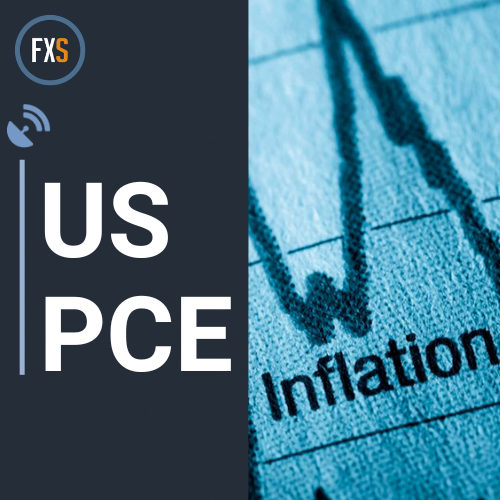US Core PCE Preview: Forecasts from seven major banks, inflationary pressure still too high

The Fed’s preferred inflation gauge, the Core Personal Consumption Expenditure (PCE), will be released by the US Bureau of Economic Analysis (BEA) on Friday, March 29 at 12:30 GMT and as we get closer to the release time, here are the forecasts of economists and researchers of seven major banks.
The US core PCE Price Index is expected to remain steady at 2.8% year-on-year. The monthly underlying inflation data is forecasted to have increased by 0.3%, slowing from January’s 0.4% advance.
Commerzbank
We expect a rate of 0.4% for the MoM rate, or 0.3% excluding energy and food (core rate). In addition, previous months' data are likely to be revised slightly upwards. The core rates for December (0.1%) and January (0.4%) could therefore be rounded up to the nearest tenth. In any case, the figures are likely to show that inflation remains stubbornly high and has even gained momentum recently. Measured in terms of the core rate, prices are likely to have risen by 2.8% YoY.
ING
Given the CPI and PPI numbers that have already been released, the consensus is firmly backing a 0.3% outcome, which – while not ideal – is progress. Given that this is published on Good Friday when many offices will be closed, thin market conditions could mean outsized market moves on any data surprise. There is also potential for the report to signal the second consecutive negative MoM reading for real consumer spending.
TDS
Still robust increases in the February CPI/PPI data will likely result in a firm 0.28% MoM gain for the core PCE – though notably down from Jan's 0.42% increase. The PCE's supercore likely also slowed down to a more manageable 0.25% gain.
NBF
The annual core PCE deflator may have progressed 0.3% MoM in February, a result which should leave the 12-month rate unchanged at a 35-month low of 2.8%.
SocGen
The main focus is on the PCE deflator, with expectations of a 0.3% hike for both the headline and the core. This aligns with the 0.4% increase recorded by the Consumer Price Index (CPI). Distinctive from the CPI, the PCE deflator evaluates expenditures for goods and services consumed, rather than household spending. For financial transactions, the costs are implicit and need to be derived. Healthcare and financial costs, which are typically covered by either the government or employers, are the primary categories of difference. We anticipate modest healthcare cost growth in the February PCE data. However, we project a substantial increase in financial costs. In all other categories, we follow the CPI price changes, adjusting the weightings to predict a 0.3% increase.
CIBC
The Fed’s preferred inflation gauge, core PCE, should come in hot for the second month in a row at 0.3% MoM. Headline PCE prices should rise by 0.4%.
Citi
Core PCE inflation should rise 0.26% MoM, rounding to 0.3% but with a chance of a somewhat softer print that rounds to 0.2%. Likely upward revisions to last month’s data should mean year-on-year core PCE is revised higher to 2.9% in January and moderates only to 2.8% YoY in February. Details of February core PCE, however, should be less concerning for Fed officials following substantial strength in services inflation in January. Core goods prices, which rose 0.1% MoM in February CPI, should rise 0.26% in February but core services prices excluding housing should rise a more modest 0.21%.
Author

FXStreet Insights Team
FXStreet
The FXStreet Insights Team is a group of journalists that handpicks selected market observations published by renowned experts. The content includes notes by commercial as well as additional insights by internal and external analysts.
















